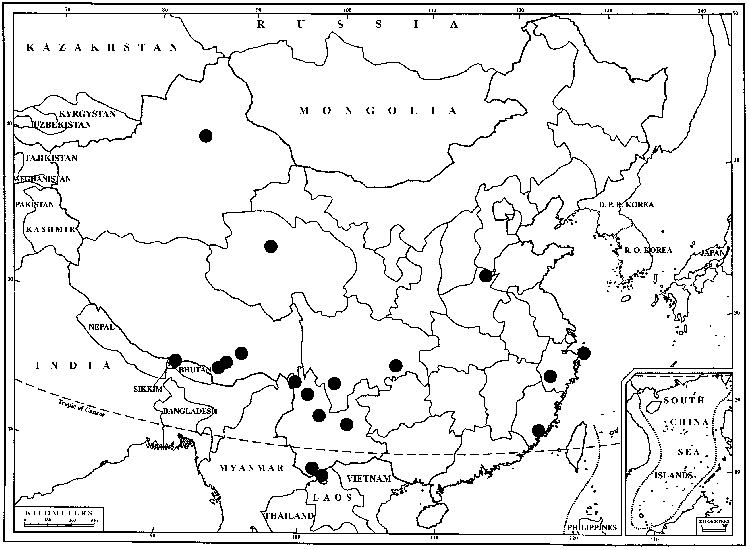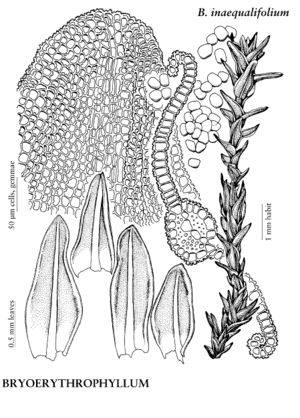Bryoerythrophyllum inaequalifolium
Bryologist 83: 232. 1980,.
Stems to 1.5 cm. Stem-leaves ovate to ovatelanceolate, to 1–2 mm, distal lamina often 2-stratose in small patches above, margins narrowly recurved or revolute to near apex, entire, rounded to obtusely acute apically; costa ending 1–2 cells before apex, not much widened or tapering, to ca. 6 cells wide at mid leaf, adaxial surface of the costa weakly convex; proximal cells differentiated across leaf, rectangular, 3–4: 1. Specialized asexual reproduction often present, by masses of unicellular gemmae on stalks in leaf-axils. Sexual condition dioicous. [Capsule theca 1.5–3 mm; operculum 0.8–1.3 mm; peristome well developed, twisted, 500–950 µm. Spores 9–11 µm.]
Phenology: Sporophytes absent in the area of the flora.
Habitat: Soil
Elevation: moderate elevations
Distribution

N.C., Mexico, West Indies, Central America, South America, Eurasia, n Africa
Discussion
Bryoerythrophyllum inaequalifolium is found at only two locations in the flora area. It is easily distinguished from other species in the area by the rounded leaf apices and masses of unicellular gemmae usually present in the leaf axils. Unicellular gemmae are not unique to this species in the Pottiaceae; they are also found in Didymodon revolutus, which is distinguished by the spurred costa having only one stereid band, the distal laminal cell walls evenly thickened, and papillae solid, low, broad, simple to multiplex, usually lenslike. For additional synonymy and discussion, see R. H. Zander (1968).
Selected References
None.
